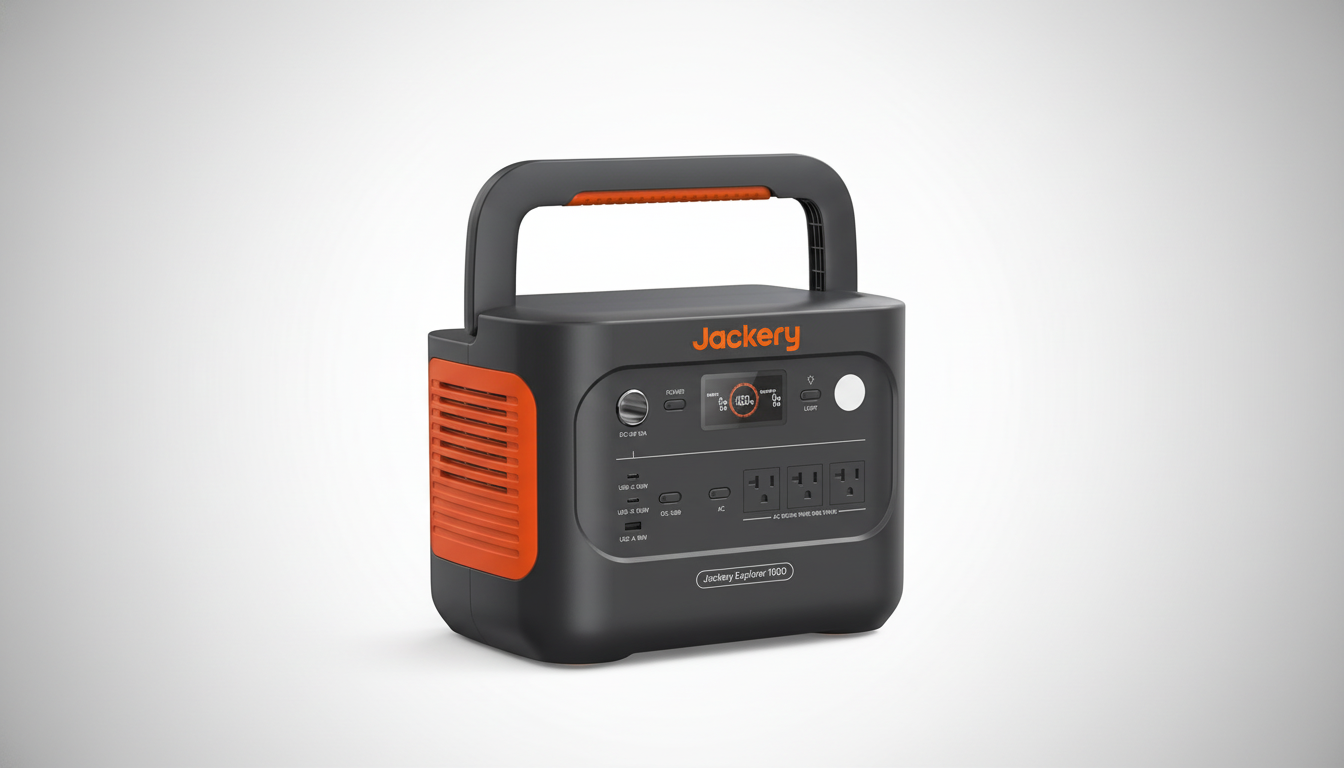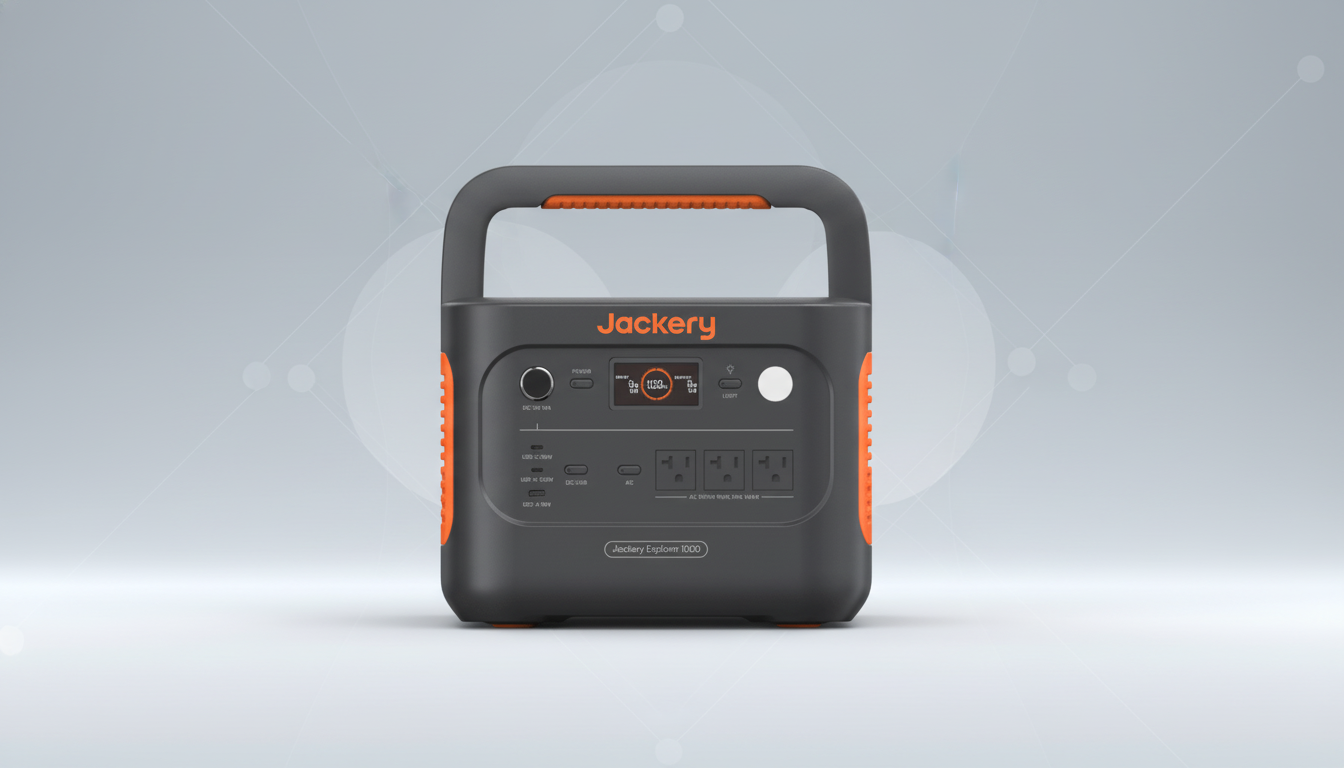The Jackery Explorer 1000 V2 portable power station just inched down to a new low of $386 at Amazon, offering the greatest discount yet on this 1kWh-class system from a top outdoor power brand.
For campers, overlanders and those who are building a condensed home backup kit, it’s that unique deal that goes past price-to-performance value.

This model marries a 1,070Wh lithium iron phosphate (LFP) battery to a 1,500W AC inverter and a 3,000W surge rating, with enough headroom to manage startup spikes from refrigerators or power tools too (and lots of small AC units). It’s still reasonably portable at 23.8 pounds, and the company also adds some practical touches: a handle that folds down for easier storage, and app control. An AC charger is included with the pack.
What Makes This Deal Stand Out at This Record Low Price
At $386, you’re paying approximately 36 cents a watt-hour (386 ÷ 1,070), a number that energy geeks use to compare true value across brands. To put it in perspective, large mainstream LFP stations of that size generally fall between $0.60 and $0.90 per watt-hour outside of major sales. Hitting the mid-$0.30s is rare and only used for clearance or special events.
The LFP chemistry is also a really big deal. The Explorer 1000 V2 is rated by Jackery to retain at least 70% of its capacity after 4,000 cycles—long enough for a product lifecycle that might span most owners’ immediate lifetimes. LFP’s thermal stability and extended cycle life are fundamental reasons why emergency planners and fleet operators have been drawn to it. Fire safety groups and testing labs have pointed out to me frosting on LFP’s stability cake when contrasted with many NMC cells, while the onboard battery management system provides additional safeguarding for temperature, overcurrent and short-circuit conditions.
Real-World Power Scenarios and Expected Runtimes
A good way to tell a power station’s usefulness is how it’s used. A standard CPAP (with the humidifier disabled), drawing about 40W, can last about two to three nights on a 1,070Wh pack. A small fridge might use around 60W; such a device could reasonably last between about 12 and 15 hours before you’d want to recharge. Compare that with the convenience of a work-from-anywhere kit — a 65W (or even higher) laptop, combined with a phone and maybe up to a 10W hotspot — this would easily stretch through a couple of long days when used judiciously.
The 1,500W inverter also gives you access to bigger loads: induction cooktops on low settings, power tools up to miter saws for short bursts, or small space heaters on eco modes. That 3,000W surge rating comes into play when compressors start up; many fridges or small window ACs briefly need a lot more power than they do while running. Be sure to check your appliance labels and be mindful of surge headroom before you plug in.

Key Specs and Usability Highlights for Everyday Use
Ports are generous and well thought out: three pure sine wave AC outlets for sensitive equipment, two USB-C ports capable of supplying up to 100W each for your laptop, a USB-A port for legacy gear, and even a 12V car socket for coolers or inflators. The companion app enables you to keep an eye on input/output and calculates approximate remaining runtime, all without physically hovering over the unit.
Portability is a strength. With its fold-flat handle, it weighs 23.8 pounds, which is light enough to move from garage to trunk and then to campsite with ease. Noise is kept in check under moderate loads by smart fan control — useful if it’s powering a CPAP, or being used near sleeping quarters. And though official solar estimates vary by panel type, the system runs on popular 100W–200W portable panels for off-grid recharges over multiple days spent out in nature.
How It Stacks Up Against Popular LFP Competitors
Competitors like the EcoFlow Delta 2 (1,024Wh, 1,800W) and Bluetti AC180 (1,152Wh, 1,800W) feature beefier inverters or faster AC recharge times, but also tend to cost hundreds of dollars more. On a purely cost-per-Wh basis, today’s Explorer 1000 V2 pricing undercuts most name-brand LFP competitors by quite a bit. If you require continuous 1,800W output for power tools or resistive heating, those higher-end models do make sense. If you need reliable capacity for your lights, refrigeration, comms and occasional high-draw bursts of cooking at this price point, the Jackery’s value story is hard to match.
For preppers, soothe them with the tidbit that this is an affordable way to achieve whole-home resilience. The U.S. Energy Information Administration has published the multi-hour annual outage averages for residential customers by reporting that the vast majority of outages are weather-related events in recent years. A silent, indoor-safe setup like this will keep the essentials online without the fumes or maintenance load of a gasoline generator.
Who Should Take This Deal Now and Why It Fits You
Campers and road-trippers in search of dependable off-grid power without lugging around a 60-pound unit will appreciate the weight and handle design. Renters unable to install transfer switches have instant peace of mind for routers, phones and a fridge. Creators, event staff and contractors get a clean power source for cameras, laptops and lighting tools on set or on site.
At $386, the Explorer 1000 V2 lands in rarefied air: enough capacity for real-world use, longevity thanks to LFP and a cost-per-Wh that you typically only see during massacre-level sales like those on Black Friday. If it fits your load profile and you’ve been holding out for a sub-$400 1kWh unit from a mainstream brand, now’s the time to strike.

